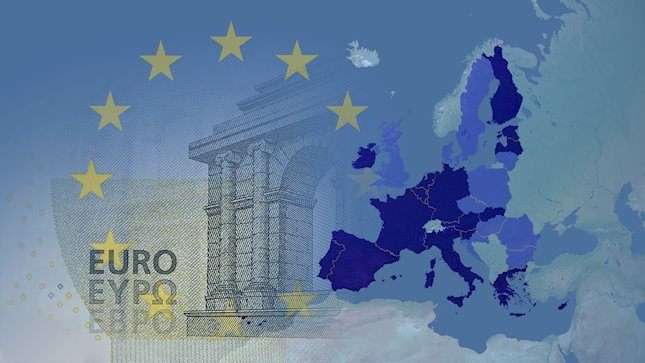- WTI price attracts some sellers to near $68.55 in Tuesday’s Asian session.
- The possible Middle East peace deal caps the WTI’s upside.
- Expectations for a revival of China’s imports could boost the black gold.
West Texas Intermediate (WTI), the US crude oil benchmark, is trading around $68.55 on Tuesday. The WTI price edges lower after the reports that Israel and Lebanon had agreed to the terms of a deal to end the Israel-Hezbollah conflict, citing unnamed senior U.S. officials. However, the escalating geopolitical tensions, particularly Russia’s actions in Ukraine might cap the WTI’s downside.
Israeli and US officials said Israel and Lebanon appear to be close to a ceasefire deal, with the Israeli cabinet set to meet on Tuesday to discuss it, per BBC. Giovanni Staunovo of UBS noted, “It seems the news of a ceasefire between Israel and Lebanon is behind the price drop, though no supply has been disrupted due to the conflict between the two countries and the risk premium in oil has been low already before the latest price decline.”
However, Oil traders will closely monitor the developments surrounding geopolitical risks. Ukraine launched US-made longer-range missiles targeting a military base inside Russian territory last week. In response, Russian President Vladimir Putin warned of lowering its doctrine to use nuclear weapons and fired a hypersonic missile at Ukraine. The escalating geopolitical tensions between Russia and Iran raised concerns over potential supply disruptions, which might boost the WTI in the near term.
Furthermore, the signs of a recovery in Chinese oil demand lift the black gold price as China is the world’s largest crude oil importer. According to LSEG Oil Research, China’s crude import may reach 11.4 million barrels per day this month due to price cuts. Additionally, S&P Global estimated that China’s oil demand may grow by 1.1% to 17.29 million bpd in 2024 and increase by 1.7% to 17.59 million bpd in 2025.
WTI Oil FAQs
WTI Oil is a type of Crude Oil sold on international markets. The WTI stands for West Texas Intermediate, one of three major types including Brent and Dubai Crude. WTI is also referred to as “light” and “sweet” because of its relatively low gravity and sulfur content respectively. It is considered a high quality Oil that is easily refined. It is sourced in the United States and distributed via the Cushing hub, which is considered “The Pipeline Crossroads of the World”. It is a benchmark for the Oil market and WTI price is frequently quoted in the media.
Like all assets, supply and demand are the key drivers of WTI Oil price. As such, global growth can be a driver of increased demand and vice versa for weak global growth. Political instability, wars, and sanctions can disrupt supply and impact prices. The decisions of OPEC, a group of major Oil-producing countries, is another key driver of price. The value of the US Dollar influences the price of WTI Crude Oil, since Oil is predominantly traded in US Dollars, thus a weaker US Dollar can make Oil more affordable and vice versa.
The weekly Oil inventory reports published by the American Petroleum Institute (API) and the Energy Information Agency (EIA) impact the price of WTI Oil. Changes in inventories reflect fluctuating supply and demand. If the data shows a drop in inventories it can indicate increased demand, pushing up Oil price. Higher inventories can reflect increased supply, pushing down prices. API’s report is published every Tuesday and EIA’s the day after. Their results are usually similar, falling within 1% of each other 75% of the time. The EIA data is considered more reliable, since it is a government agency.
OPEC (Organization of the Petroleum Exporting Countries) is a group of 12 Oil-producing nations who collectively decide production quotas for member countries at twice-yearly meetings. Their decisions often impact WTI Oil prices. When OPEC decides to lower quotas, it can tighten supply, pushing up Oil prices. When OPEC increases production, it has the opposite effect. OPEC+ refers to an expanded group that includes ten extra non-OPEC members, the most notable of which is Russia.
Information on these pages contains forward-looking statements that involve risks and uncertainties. Markets and instruments profiled on this page are for informational purposes only and should not in any way come across as a recommendation to buy or sell in these assets. You should do your own thorough research before making any investment decisions. FXStreet does not in any way guarantee that this information is free from mistakes, errors, or material misstatements. It also does not guarantee that this information is of a timely nature. Investing in Open Markets involves a great deal of risk, including the loss of all or a portion of your investment, as well as emotional distress. All risks, losses and costs associated with investing, including total loss of principal, are your responsibility. The views and opinions expressed in this article are those of the authors and do not necessarily reflect the official policy or position of FXStreet nor its advertisers. The author will not be held responsible for information that is found at the end of links posted on this page.
If not otherwise explicitly mentioned in the body of the article, at the time of writing, the author has no position in any stock mentioned in this article and no business relationship with any company mentioned. The author has not received compensation for writing this article, other than from FXStreet.
FXStreet and the author do not provide personalized recommendations. The author makes no representations as to the accuracy, completeness, or suitability of this information. FXStreet and the author will not be liable for any errors, omissions or any losses, injuries or damages arising from this information and its display or use. Errors and omissions excepted.
The author and FXStreet are not registered investment advisors and nothing in this article is intended to be investment advice.
Editors’ Picks
Eurozone PMI sounds the alarm about growth once more
The composite PMI dropped from 50 to 48.1, once more stressing growth concerns for the eurozone. Hard data has actually come in better than expected recently – so ahead of the December meeting, the ECB has to figure out whether this is the PMI crying wolf or whether it should take this signal seriously. We think it’s the latter.
Best Forex Brokers with Low Spreads
VERIFIED Low spreads are crucial for reducing trading costs. Explore top Forex brokers offering competitive spreads and high leverage. Compare options for EUR/USD, GBP/USD, USD/JPY, and Gold.



